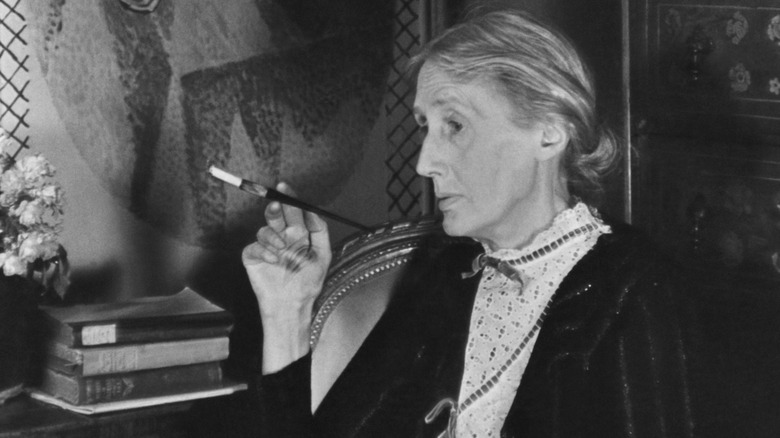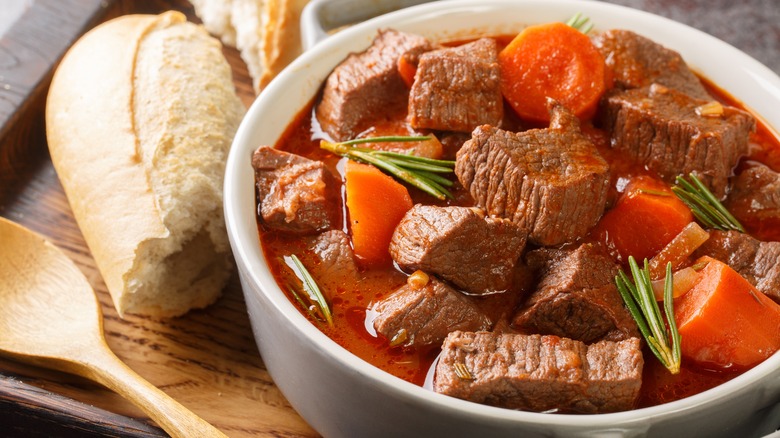Virginia Woolf's Favorite Dish Was A True French Classic
If you've never tried it before, boeuf en daube is a traditional Provençal stew made from slow-simmered, wine-braised, cubed beef with onions, carrots, and aromatics like bay leaves, cloves, garlic, rosemary, and thyme. It's similar to northern France's boeuf bourguignon, but it can be made with white or red wine and often includes olives. It's nothing fancy, but it meant a lot to Virginia Woolf — the English writer whose favorite dish was the French classic. Woolf even immortalized the stew in her 1927 novel "To the Lighthouse," in which the protagonist Mrs. Ramsay hyper fixates over several chapters on executing a perfect boeuf en daube for her family during a vacation off mainland Scotland.
A servant cook called Mildred spends three entire days making the elaborate dish. When the stew is finally served, the meal symbolizes the value of familial closeness as well as the tragic, beautiful looming expiration date of this newfound sacred closeness, as the family's vacation is finite.
Dinner parties feature prominently in Woolf's novels as the setting for important conversations and character developments, but, in "To the Lighthouse," the serving of the boeuf en daube functions as the climax of the story — quite a glittering ode to the author's favorite dish, which she describes as a "savory confusion of brown and yellow meats," emitting an "exquisite scent of olives and oil and juice" (via The Paris Review).
Who's afraid of boeuf en daube?
On the table, Virginia Woolf was an epicure through and through. On the page, she revered food beyond its physical meaning. In "A Room of One's Own," the writer famously penned the modern proverb, "One cannot think well, love well, sleep well, if one has not dined well." This was a proverb Woolf closely followed in her personal life. She belonged to the Bloomsbury group: an intermingling, bohemian, middle-class bunch of British artists whose work was popular in the early- to mid-1900s. As Woolf wrote in a 1925 letter, via the BBC, one of the group's most cherished activities (like any friends) was enjoying a good meal together. In fact, Woolf wrote that the group kept dining together for more than two decades, and "no amount of quarreling or success, or failure has altered this."
Boeuf en daube wasn't the only French dish that arrested Woolf's appetite, either. During the 1920s, Woolf even sent her personal servant Mabel to train under French celebrity chef and restaurateur Xavier Marcel Boulestin because she liked French food so much in general – even if some dishes took a while to prepare. Boeuf en daube requires at least one full day to make, with the meat marinating overnight, and the fact that Woolf devoted several pages to its preparation in "To the Lighthouse" illustrates just how seriously the writer took her beloved stew.

